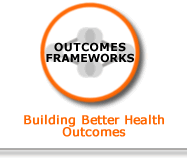 |
F. Evidence for interventions to improve social connectedness ( Prevention model) |
Summary There is limited highly processed evidence and plausible theory to suggest a link between community cohesion and improved social outcomes. Rationale As part of the Mental Health Outcomes Framework (NHS Health Scotland 2012), limited highly processed evidence was identified from NICE public health guidance to suggest direct and indirect community engagement activities may impact on social capital. A chain of change ‘Increasing social connectedness, relationships and trust in families and communities’ is outlined in logic model 3 of the Mental Health Outcomes Framework. Community engagement activities, individual and community-based arts programmes and social prescribing will contribute to individuals and communities having increased knowledge and awareness of services and promote motivation and access to services and programmes for all. This, in turn, will increase attendance, participation and engagement, therefore contributing to increased trust in the community, increased social support and social networks. The Evidence Summary on community engagement is available from the following link: http://www.healthscotland.com/ofhi/MentalHealth/content/evidence/MHev3_3.html NHS Health Scotland’s Health Inequalities Policy Review for the Scottish Ministerial Task Force on Health Inequalities states that area-based initiatives may improve their effectiveness by including communities and individuals in designing interventions that draw on community strengths, and address social isolation through co-production. [1] Scottish policy and practice note The Report of the Ministerial Task Force on Health Inequalities (2013) (the second review of Equally Well) looked at how communities are being engaged in the decisions that affect them and also the importance that ‘place’ has on health inequalities. Two priority areas identified in the review were:
In support of the creation of health the report includes the following definition of social capital: Social capital describes the pattern of networks among people and the shared values which arise from those networks. Greater interaction between people generates a greater sense of community spirit. The definition used by the Office for National Statistics, taken from the Office for Economic Cooperation and Development (OECD), is ‘networks with shared norms, values and understandings that facilitate cooperation within or among groups’. Higher levels of social capital are associated with better health, higher educational achievement, better employment outcomes, and lower crime rates. There are a number of different aspects to social capital:
Shared norms, values and understandings relate to shared attitudes towards behaviour that are accepted by most individuals and groups as a ‘good thing’. The Task Force report [2] highlights the growing recognition of a need to shape places which are nurturing of positive health, wellbeing and resilience. The report cites the Single Outcome Agreement (SOA) guidance[3] published in 2012 that highlighted the importance of tackling place as a key determinant of health, followed by the recent policy statement Creating Places[4] that recognised that the quality of the built environment affects everyone, and that it is the purpose of architecture and urban design not only to meet our practical needs, but also to improve the quality of life for the people of Scotland and to that end the Scottish Governments has committed to developing a Place Standard.
|
References:
|

